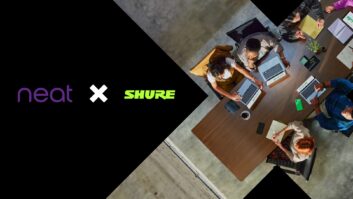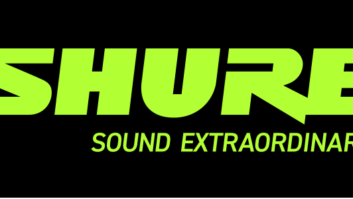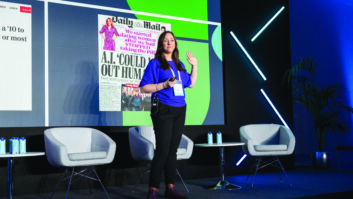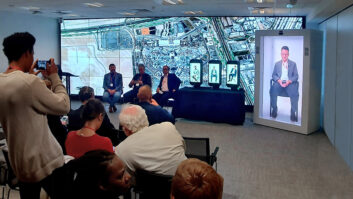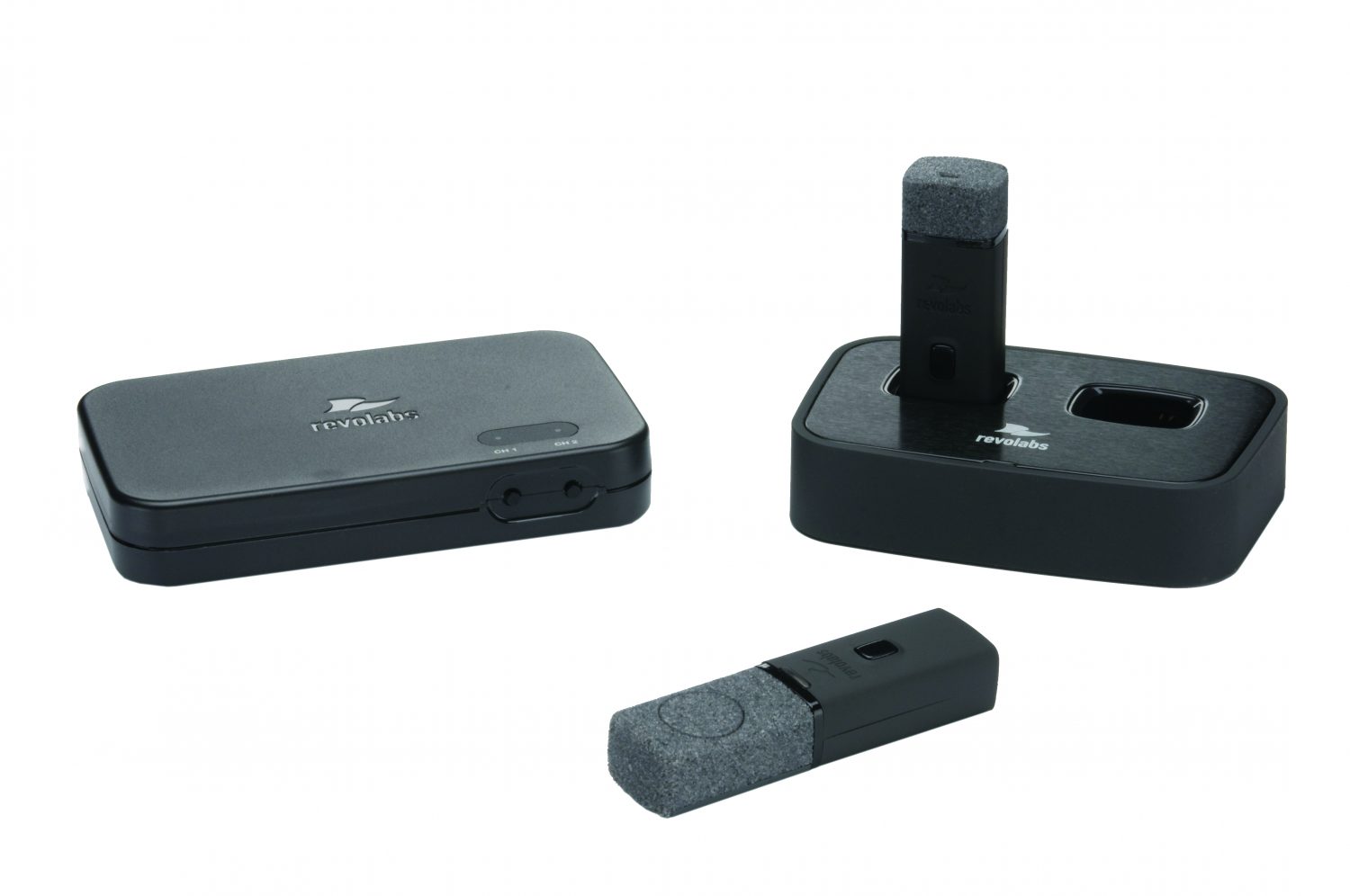
Russell Harpham, EMEA director at Revolabs, breaks down the growth of conferencing in corporate and education environments and reveals why the huddle room is the ‘melting pot of AV and IT’.
What sector are you seeing the fastest growth in demand – education or corporate?
Both are rapidly evolving and growing at the same time but in different ways. Audio is important to both, and our product portfolio addresses them in equal measure. In corporate, the installation market isn’t going away, rather organisations are changing their outlook on where they spend their money. Historically, this market focused on fully integrated AV solutions for their boardrooms and conference rooms. They spent a lot of money putting in cutting-edge systems, and largely ignored 60 to 70% of the other meeting rooms in the building. In the last 18 months, there’s been a shift as they begin to realise a need to consider these other rooms. If these rooms are better serviced, there’s a better chance of higher room usage rates and adoption of conferencing and collaboration platforms. Corporations are consistently assessing how much money they spend on permanent installation environments and how to balance that with the technology they need to deploy in those other smaller rooms. The boardroom space isn’t a be all, end all anymore. As a result, it’s put a lot of pressure on the budget as they start thinking about upgrading rooms and changing the scale of deployments so it gives more users more access to the technology they need.
In the education market, we’re seeing institutions looking at how to take the audio technology that’s been successfully deployed in large lecture theatre environments and auditoriums and apply to all their rooms. Lecture capture is spurring this because schools want to make content accessible to students outside of class time. From an audio perspective, we’re trying to drive technology that can easily be utilised and enabled in the classroom, allowing any teacher to walk in, start the lecture, and automatically record their audio in high quality and have that be available to students following the class.
How big of an impact has the huddle room had on the conferencing space?
When we think about the evolution of AV, probably the most relevant story that’s still at work today is AV/IT convergence. It’s been the battle of good and evil for more than a decade. And then the huddle room came along. The huddle room is the melting pot of AV and IT. It’s that perfect storm which will drive that convergence. The huddle room, unlike the elaborate boardroom environment, can be controlled and maintained exclusively by the IT team, but they still require traditional enterprise quality AV products and peripherals. When you look at the range of UC products available today, they have IT connections. The huddle room is a significant challenge to the integration market because AV installers must be present in both spaces. They still have to do what they’ve always done — deliver a high-quality experience for end-users — but they have to cater to the requirements of those managing these spaces — IT.
Has a system’s versatility become as important, if not more so, than out and out performance, due to the many different potential users/applications?
In the AV installation market, the considerations for the system 10 years ago was all about the widget, the next big thing, its level of security, encryption, and fidelity. It was about bits and bytes, around how it performed. It had to reliable because organisations had maybe 10 rooms outfitted with all the latest bells and whistles. They were expensive. As the way people collaborate has changed, the system requirements have evolved as well. Now the questions are: Is it intuitive? Is it easy to manage? Is it easy to install? Does it have the flexibility to accommodate the BYOD movement and cater to the different scenarios that are happening in the space? Before, any imperfection meant that the room didn’t work. Having even just one room go down meant a significant downtime in room access. Today, there could be hundreds of huddle spaces in one building, but if one goes down, you still have many more rooms in operation. While performance is certainly something that’s still a priority, it’s now not on its own as the focus feature, which makes the solution accessible to the growing range of users and applications.
What are the biggest changes you have identified in conferencing technology over the last 2-3 years?
Revolabs has been pushing wireless technology in the conferencing space for 10+ years, but back then, it was largely for boardrooms. Users weren’t ready for wireless and didn’t easily understand the technology. The biggest change within the last two to three years is seeing this evolve. Now wireless is just part of our lives. Wi-Fi isn’t a luxury; it’s part of the fabric of productivity, and that includes wireless conferencing technology. The other part is that we’re no longer just deploying large conferencing spaces. We have to accommodate multi-purpose spaces and huddle rooms, both of which require autonomous and flexible technology. This also goes back to the change in requirements we’re seeing as AV and IT co-exist. It’s meant a change in the connection inputs — such as USB, Bluetooth, and Ethernet – that the installation community not only has to accommodate but rely on to ensure a high-quality conferencing and collaboration experience as well.
Tell us about a recent installation project that highlights Revolabs’ expertise in the conferencing sector.
There’s a drive to introduce digital conferencing technology to the courtroom environment. We’re seeing an increased need to facilitate depositions and interviews without having the person physically present in the room. It requires a professional-grade solution because obviously, they can’t afford to miss a word or have it be unreliable. A lot of these rooms are in very old buildings where drilling holes in the wall and pulling cable is not just costly, sometimes it’s impossible. Or if it’s a new building, you’re contending with rooms that are multi-purpose and being reconfigured as needed. As such, this application requires a conferencing technology that’s flexible and can support a wide range of audio setups
We have a lot of experience and knowledge in the wireless space, which was significant to understanding the needs of this growing market and how to meet them. When Revolabs released its third-generation wireless microphone solution, we introduced the wireless gooseneck microphone to fit the needs of these applications. Historically, the wired gooseneck microphone has been a fixture of the courtroom. It’s familiar technology to the users in this space and because it’s wireless, there’s no cable to accommodate and it still enables the high-quality, reliable and secure audio experience these rooms require.
Most recently, in the enterprise space, Revolabs completed the commissioning of arguably the largest wireless microphone deployment: more than 1,200 mics within a single building. Being able to accommodate that many mics in one space without interference issues required our unique ability to understand the wireless space and the DECT spectrum.
